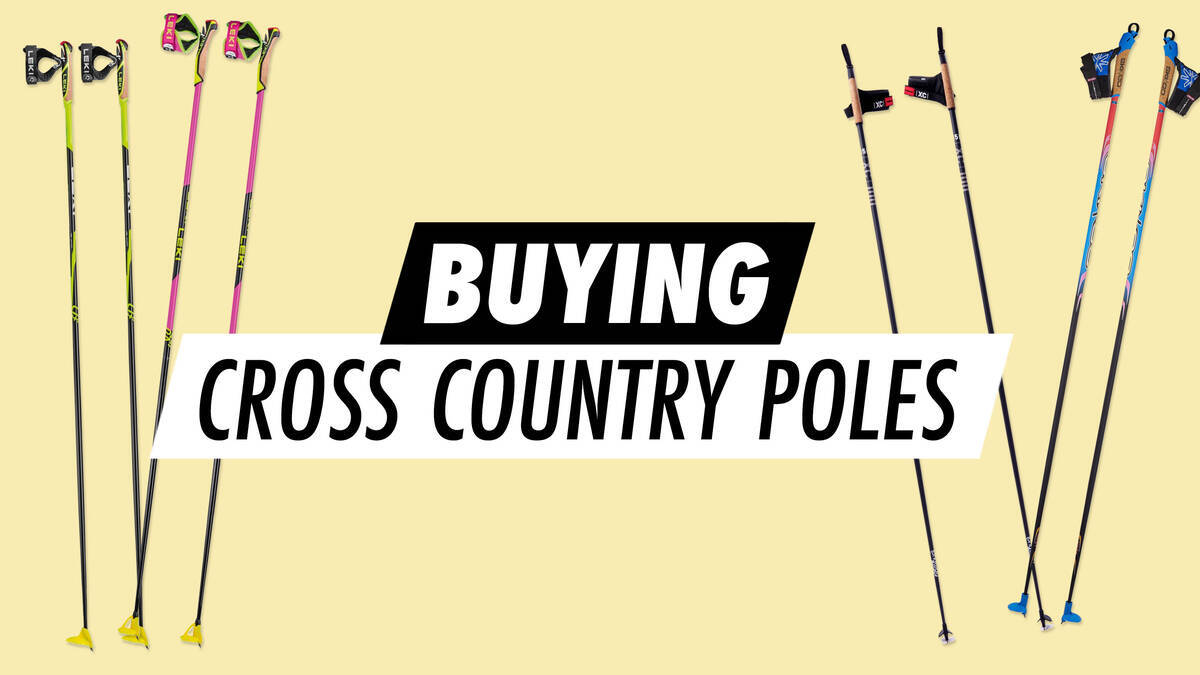How to Select the Best Cross Country Ski Poles

In cross-country skiing, poles are crucial. Different techniques are utilised in classic and skate skiing, making it important to choose the right ski poles accordingly. This guide will delve into various aspects of cross-country poles including their length, materials, grips, and tips.
If you're knowledgeable about XC poles, you might want to browse through our complete selection of cross-country ski poles. Otherwise, read on to acquaint yourself with the key considerations when selecting cross-country ski poles.
Overview
Overview
Determining the Suitable Size for Cross Country Ski Poles
Select poles based on your height and skiing style. Achieving the right length involves aligning pole size with your height and skiing preference.
Proper pole sizing is vital for power transmission, comfort, and endurance. Poles that are too long may lead to shoulder and arm strain, while short ones could push you too far forward, diminishing power transmission and stability.
Due to different techniques, the recommended length for skate skiing poles varies from classic skiing poles, which are shorter for good reason.
In classic skiing, the double poling technique involves lifting the poles to plant them ahead in the ground. The upper body leans forward for propulsion. Poles that are too lengthy strain shoulders, hindering effective force application. Conversely, short poles reduce the force you can exert during strides.
Skate skiing poles, being longer, reach the ground when held in a V-shape, allowing skiers to extend further to the sides and back, thus increasing the distance over which force and momentum are generated.
|
|
|
|---|---|
|
Skiing style |
General reference |
|
Classic ski pole length |
30 cm (or 12”) shorter than a skier’s height |
|
Skate ski pole length |
20 cm (or 8”) shorter than a skier’s height. |
Note: In competitive settings, strict regulations must be followed. Per International Competition Rules from FIS, pole length must not surpass 83% of your height when wearing ski boots.
If unable to find poles that perfectly match your height, don't be disheartened. Newcomers should consider slightly shorter poles, while experienced skiers decide based on their skiing experience whether a longer pole is more advantageous.
For backcountry cross-country skiing, adjustable poles with larger snow baskets are recommended. We'll discuss this in further detail in the segment on backcountry ski poles.
Cross Country Ski Poles Materials - Considering Weight and Stiffness
Pole shafts may be made from fibreglass, carbon fibre, or both. Carbon content determines the stiffness of a pole, with 100% carbon variations being stiffer than those with 50% fibreglass. Some aluminium models exist, which are often used for backcountry skiing due to better resistance in rugged conditions.
Stiffer poles provide optimal power transmission, translating effort into maximum speed. Softer poles offer less power but are gentler on the arms over longer distances. Those facing elbow sensitivity might benefit from them. For roller skiing on harder ground, softer poles are advisable - check out roller ski poles in our collection.
The stiffness also correlates with weight; stiffer poles tend to be lighter, demanding less force to move them forward with each stroke.
In summary: If speed is your priority, choose stiff and light poles. If leisurely outings are your preference, softer poles are ideal.
Grip Construction and Strap Design on Cross Country Poles
Grips are vital for cross-country ski poles' performance and comfort, influencing control and stability. Usually made from rubber, cork, or foam, each has its own benefits.
Rubber grips offer a firm hold, suitable for any weather. Cork retains warmth effectively, keeping hands warmer. Foam provides a light, cushioned feel, alleviating hand fatigue on longer trips and offering a comfy grip.
Pole straps are equally crucial for pole control. Proper strap length adjustment enhances performance. The right adjustment lets you release your grip while maintaining control.
Choose grips based on your preference and adjust straps properly to elevate your skiing experience and maximise trail performance.
Need extra grips or straps? Explore our cross-country ski poles accessories for spare parts.
The following video provides a guide on how to change ski pole grips.
Backcountry Cross Country Ski Poles Featuring Adjustable Length and Bigger Snow Baskets
In backcountry skiing, large baskets on poles are crucial. They provide a steady pressure surface in soft snow away from tracks, offering support in varying conditions.
Adjustable poles are key for backcountry skiing. Being able to alter pole length for different terrains, known as side-hilling, helps keep arms aligned.
For rapidly changing slopes, adjustable pole lengths adapt to conditions. Shortened poles help uphill ascents, encouraging an efficient posture. For flat or downhill slopes, longer poles enhance leverage and stability.
Find adjustable ski poles in our selection. You can filter by length to see options with adjustable ranges.
Replacing Tips on Cross Country and Roller Ski Poles
Pole tips wear down over time and need replacing. You might also swap tips for roller skiing on asphalt, using your regular poles for training.
This video demonstrates how to change pole tips on cross-country or roller ski poles. Ensure you measure the pole's diameter before selecting ski pole tips or those for roller skiing.
